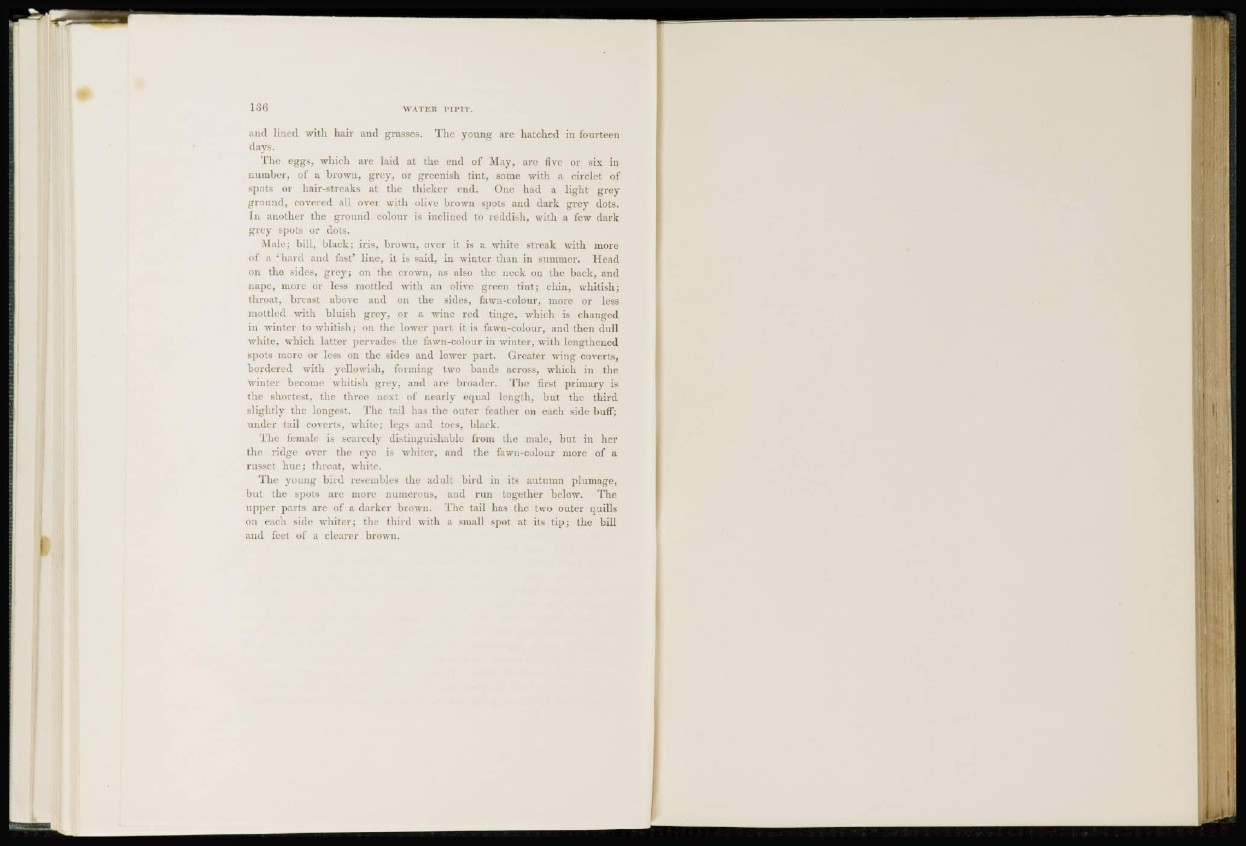
and lined with hair and grasses. The young arc hatched in fourteen
days.
The eggs, which are laid at the end of May, are five or six in
number, of a brown, grey, or greenish tint, some with a circlet of
spots or hair-streaks at the thicker cud. One had a light grey
ground, covered all over with olive brown spots and dark grey dots.
In another the ground colour is inclined to reddish, with a few dark
grey spots or dots.
Male; bill, black; iris, brown, over it is a white streak with more
of a 'hard and fast' line, it is said, in winter than in summer. Head
on the sides, grey; on the crown, as also the neck on the back, and
nape, more or less mottled with an olive green tint; chin, whitish;
throat, breast above and on the sides, fawn-colour, more or less
mottled with bluish grey, or a wine red tinge, which is changed
in winter to whitish; on the Lower part it is fawn-colour, and then dull
white, which latter pervades the fawn-colour in winter, with lengthened
spots more or less on the sides and lower part. Greater wing coverts,
bordered with yellowish, forming two bands across, which in the
winter become whitish grey, and arc broader. The first primary is
the shortest, the three next of nearly equal length, but the third
slightly the longest. The tail has the outer feather on each side buff;
under tail coverts, white; leg-- and toes, black.
The female is scarcely distinguishable from the male, but in her
the ridge over the eye is whiter, and the fawn-colour more of a
russet hue; throat, white.
The young bird resembles the adult bird in its autumn plumage,
but the spots are more numerous, and run together below. The
upper parts are of a darker brown. The tail has the two outer quills
on each side whiter; the third with a small spot at its tip; the bill
and feet of a clearer brown.